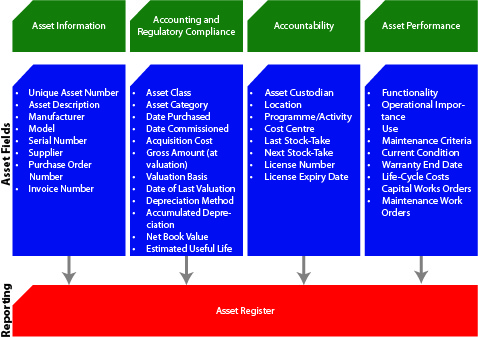Years ago, I explored the vital role of Fixed or Lifecycle Asset Management and plant maintenance in our newsletter. Eskom’s recent load-shedding statements, attributing the issue to essential maintenance at generating stations, have prompted me to revisit this crucial topic. With my extensive expertise in Fixed or Lifecycle Asset and Infrastructure Management, especially Maintenance Management, I recognize the significant impact of inadequate maintenance planning. Frustrated by recurring excuses, I am revamping and expanding my previous article. This new series of newsletters aims to underscore the severe consequences of neglecting proper maintenance and highlight the importance of implementing robust processes to protect assets. I trust that diligent readers will grasp the urgency and necessity of these measures.

Importance of Managing Tangible Assets Appropriately
Asset Management is a comprehensive, strategic, and systematic approach to maintaining, upgrading, and operating physical assets—ranging from electrical infrastructure and roadways to traffic control structures, bridges, and water treatment plants—in a cost-effective manner. This method delivers significant benefits, including enhanced accountability, sustainable service delivery, risk reduction, and improved financial management and forecasting. By implementing Asset Management practices, organizations can ensure their assets are optimized for performance and longevity while also achieving greater efficiency and reliability in their operations.
What is Asset Management?
The Management of Fixed Assets is a systematic process encompassing the planning, acquisition, operation, maintenance, renewal, and eventual disposal of assets. Its primary objective is to maximize asset service delivery potential while managing associated risks and costs throughout their lifecycle. Effective Asset Management ensures that assets deliver high-quality services sustainably for both current and future generations. This practice is implemented through a comprehensive asset management program, typically outlined in a written Asset Management Plan.
However, it appears that many individuals overseeing Asset Management activities lack a thorough understanding of its full scope and intricacies.
Identification of Immovable Asset
Thorough identification of each asset is essential. Adhering to proper processes from the outset ensures that this step does not require repetition.
Despite the expense, neglecting this step renders subsequent actions lacking substance and essentially meaningless.
An Asset Register is pivotal in comprehending the details of owned and controlled assets. Depending on the entered information’s complexity, it can be used to determine:
- The current condition of assets
- Timing for asset replacement
- Information for accounting standards and regulatory requirements
- Asset locations and custodians for stock-takes
- Frequency and levels of asset maintenance programs
- Life-cycle costs by asset, program, and business activity.
Verification of Fixed Assets
A physical verification of assets is an essential process that ensures the assets listed in the Asset Register are indeed in the possession of the company. The primary goal is to confirm the physical existence of the assets and ensure they are accurately accounted for.
However, this is only part of the process. For insurance purposes, it is crucial to verify that the records match the asset’s nameplate details. For instance, beyond the engine, gearbox, and differential, a vehicle may have over ninety specification fields that need to match. Simply knowing the make, type, model, and serial numbers is not sufficient. This thorough verification process is vital to ensure the integrity and accuracy of asset records, which supports effective management and insurance compliance.
First Step in Managing Immovable Assets
Before commencing any Asset Management processes, it is crucial to have a comprehensive understanding of your assets. Maintenance planning can only be effective if you know what assets you have, where they are located, their current condition, when they were last serviced, and when the next maintenance intervention is scheduled. For this, you need a proper Asset Register—not merely a spreadsheet listing items with details like cost and expected life expectancy. Such a list does not suffice as an Asset Register, as it lacks the necessary historical records.
So, what is an Asset Register? It is far more than a simple inventory with financial details. An Asset Register is the cornerstone of Asset Management, housing all asset information, including financial and non-financial details throughout each asset’s lifecycle. Without these historical records, it becomes extremely challenging to:
- Assist in meeting accounting standards and legislative compliance.
- Monitor performance.
- Ensure accountability.
A well-maintained Asset Register is indispensable for effective Asset Management and the sustainable optimization of assets.
Consequences of Not Managing Fixed Assets Effectively
If asset maintenance is repeatedly deferred, as seen in many State-Owned Enterprises, future expenses can skyrocket to the cost of the part squared or 15 times the total repair cost. To avoid this, organizations must implement an effective Preventive Maintenance Program to curb the rate of decay.
Moreover, at the first signs of deterioration, immediate action should be taken. Early intervention leads to positive cash flow, with savings realized from each timely repair. For Municipal Managers and Chief Financial Officers, the challenge lies in creatively securing funds for repairs as soon as maintenance needs are detected. Any delay not only increases costs but can escalate expenses up to 40 times the cost of early intervention.
In essence, investing in maintenance now saves significantly more in the future. Understanding the rapid escalation of costs makes obtaining necessary funds easier. The case for Maintenance Management funding becomes much simpler with a proper Asset Register in place.
Roles and Responsibilities of Board Members (Councillors)
It has become evident that many Public Service Board Members—Councilors—have limited understanding of their roles and responsibilities in Asset Management. To address this gap, we have previously distributed a series of special newsletters detailing these roles and responsibilities, specifically for Non-Monetary Asset Management. The following image provide further insight:
